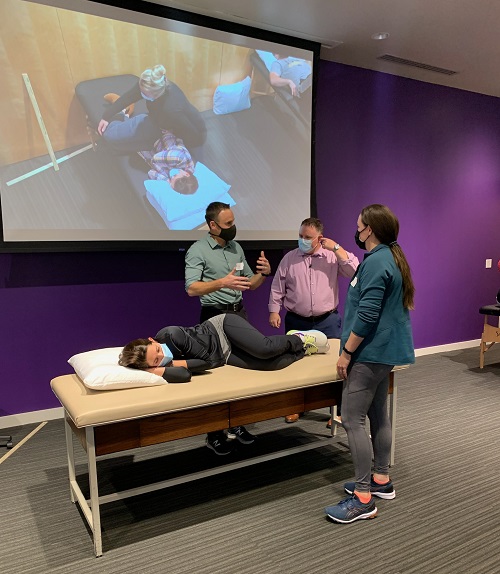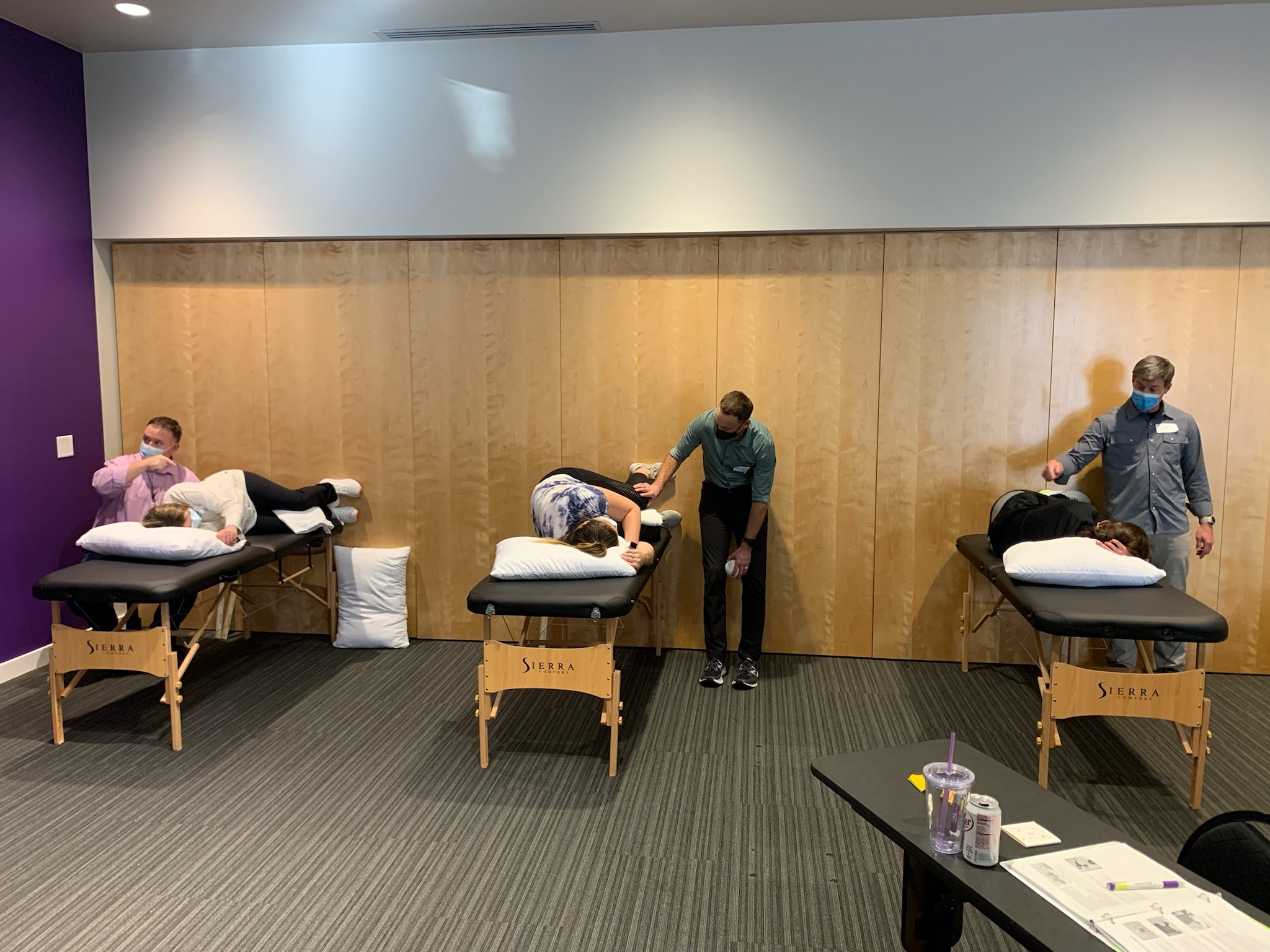Timing is a tricky thing, isn’t it? Difficult to measure. Tough to describe. Hard to master. But once you find timing, or timing finds you, it can dramatically change any outcome. Aren’t we all searching for that nebulous and elusive thing called "timing"? One of the main overall goals of PRI is to improve neuromuscular timing to reduce patterned behavior. Timing is kind of like a unicorn with a majestic, golden mane; you know it when you see it.
Last weekend it was my distinct pleasure to teach Myokinematic Restoration to 68 movement specialists, 45 of which were new to the science of PRI. We had 10 individuals in person, and two of them were my good friends Craig Depperschmidt, DPT, PRC and Jason Miller, PT, PRC, both of whom are new additions to our PRI faculty. We are lucky to have them. We had a group of 18 co-workers attending the live-stream together. It was daylight savings, which means we got an extra hour of sleep Saturday night. And we had a unicorn in our midst. We were fortunate to have had several unique events occur this weekend that I feel blessed to have all been able to share the experience with 68 friends, old and new.

One of our objectives in this course is to learn how to correctly interpret the tests and let them lead us into our treatment approach. Another objective is to understand how and when to use ligamentous muscle to stabilize an unstable hip capsule. For those of you who have taken this course before, you’ve experienced the lab portion on the second day, and we usually are able to get to around 7 or so PRI non-manual techniques. On this unique weekend, we were able to get to 15 techniques in lab. Part of it was the small class size during lab, but Craig and Jason were an enormous reason we were able to get to so many activities. It was just a unique experience afforded to those in attendance in-person and on the live stream. This extensive lab time allowed us to dive into the algorithms on pages 49 and 52, as well as the inhibition section of the appendix. We used page 48 as a treatment flow chart, and proceeded through that page as a decision-making tree to help the attendees solidify examples of how to apply the science of PRI upon returning to their clients and patients. Do what the tests tell you to do. Reposition. Do page 39. Retest. Do what the tests tell you to do.



One of the best teaching examples for this course is an example of someone who fits the description of the algorithm on page 49, and the algorithm on page 52. Ron did this for me in my very first Myokin class in 2004, and it helped me remember how different these patients can present. It is pretty easy to find someone in the course during lab who presents with testing representative of page 52; however, finding someone who fits the description on page 49 is kind of like finding a majestic unicorn with a flowing golden mane. In 6 years of teaching this course I had only met one unicorn, until this weekend. Our unicorn’s name was Brett, and he provided us with an exceptional example of how and why testing matters, and how testing helps drive the treatment decision-making tree on page 48.
My thanks to all of those who attended on live-stream. Your questions clearly indicate you were engaged and were thinking ahead to future courses. Your questions were spot-on and I am looking forward to seeing many, many of you in future PRI courses.
My sincere thanks to Brett Shulte, Alison Janky, Savannah DeVault, and Angie Nixon. Your willingness to be our models for demonstration provided all of us with an exceptional learning experience. My thanks to RJ for his excellent production of our live stream, and to Jason and Craig for keeping me honest and helping us get through as much lab as we did.
So, to recap……
Fantastic in-person and live stream audience. Excellent questions all around. Unbelievable lab. A splendid unicorn. An extra hour of sleep.
Timing is everything.


